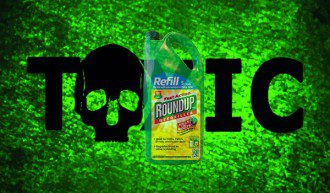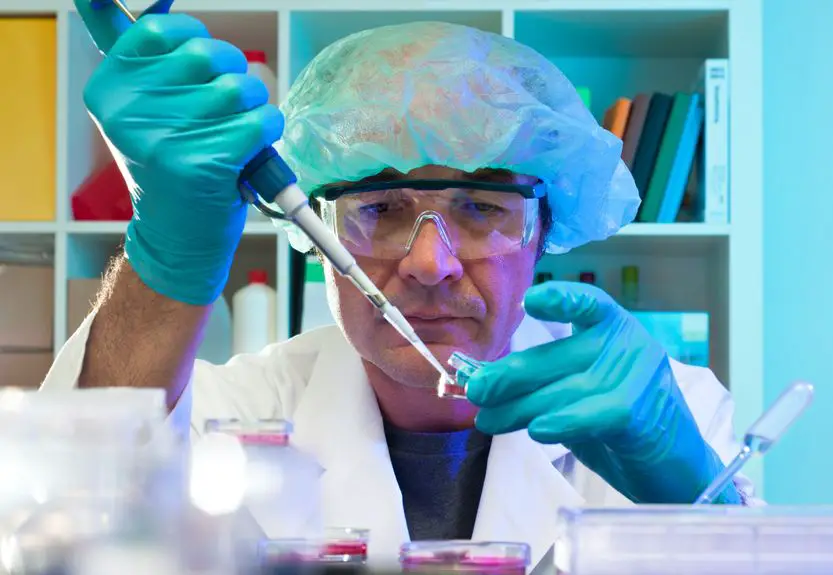By Sayer Ji
Contributing Writer for Wake Up World
A newly published scientific consensus statement on Roundup herbicide reveals exposure to this ubiquitous toxicant is increasing and valid research proving it safe is still nowhere to be found.
A powerful new review on the toxicity of glyphosate signals a growing consensus among non-industry-sponsored scientists that the relatively unmonitored and unregulated exposure to this ubiquitous toxicant can no longer be promoted as a justifiable risk. The review is open access and can be downloaded as a PDF and/or read in its entirety here.
The newly released consensus statement published in the journal Environmental Health and titled, “Concerns over use of glyphosate-based herbicides and risks associated with exposures: a consensus statement,” identified the broad spectrum herbicide glyphosate (common trade name “Roundup”) as major threat to human and environmental health.
[pro_ad_display_adzone id=”110028″]
Identified as having increased in usage 100-fold since the late 1970’s, the study predicts glyphosate usage will increase to even greater amounts due to,”widespread emergence of glyphosate-resistant weeds and new, pre-harvest, dessicant use patterns.” Oats, for example, are commonly sprayed with glyphosate as a pre-harvest dessicant, even though it is legal to label them “non-GMO,” as we recently reported on in connection with the product Cheerios.
The study also identified a key regulatory problem associated with increased glyphosate exposure: “To accommodate changes in GBH [glyphosate based herbicide] use patterns associated with genetically engineered, herbicide-tolerant crops, regulators have dramatically increased tolerance levels in maize, oilseed (soybeans and canola), and alfalfa crops and related livestock feeds.” In a previous report titled, “EPA to America People: ‘Let Them Eat Monsanto’s Roundup Ready Cake,” we discussed the EPA’s role in covering up the increasingly dire glyphosate accumulation in our food supply by arbitrarily increasing its permissible levels without regard to the obvious health risks. This is all the more disturbing considering recent research has demonstrated it has the potential to act as a carcinogenic/estrogenic endocrine disrupter in the parts per trillion range.
Owing to the fact that animal and epidemiology studies clearly point to glyphosate exposure having serious health risks (see the GreenMedInfo.com toxicity database on glyphosate to read the first-hand literature on the topic), as well as the fact that the World Health Organization’s International Agency for Research on Cancer recently concluded that glyphosate is “probably carcinogenic to humans,” the scientists who authored the new paper produced a Statement of Concern, summarized into the following seven concerns:
(1) GBHs are the most heavily applied herbicide in the world and usage continues to rise
(2) Worldwide, GBHs often contaminate drinking water sources, precipitation, and air, especially in agricultural regions
(3) The half-life of glyphosate in water and soil is longer than previously recognized
(4) Glyphosate and its metabolites are widely present in the global soybean supply
(5) Human exposures to GBHs are rising
(6) Glyphosate is now authoritatively classified as a probable human carcinogen
(7) Regulatory estimates of tolerable daily intakes for glyphosate in the United States and European Union are based on outdated science.
While there are dozens of glaring problems addressed in this report, we would like to highlight the following five points of concern:
-
Food Contamination Not Adequately Studied: “Adequate surveys of GBH contamination in foodproducts have not as yet been conducted on a large scale, even in the U.S. The first and only in-depth USDA testing of glyphosate and AMPA residues in food targeted soybeans, and occurred once in 2011 [13]. Of the three hundred samples tested, 90.3 % contained glyphosate at a mean level of 1.9 ppm, while 95.7 % contained AMPA at 2.3 ppm. In contrast, the next highest residue reported by USDA in soybeans was malathion, presentat 0.026ppm in just 3.7% of samples. Thus, the mean levels of glyphosate and AMPA in soybeans were 73-fold and 83-fold higher than malathion, respectively.”
-
Toxicity Research Not Valid: “Most toxicological studies using advanced, modern tools and experimental designs within molecular genetics, reproductive, developmental, endocrinological, immunological and other disciplines have been undertaken in academic and research institute laboratories, and results have been published in peer-reviewed journals. Regulators have not incorporated, formally or indirectly, such research into their risk assessments. Rather, they rely on unpublished, non-peer reviewed data generated by the registrants. They have largely ignored published research because it often uses standards and procedures to assess quality that are different from those codified in regulatory agency data requirements, which largely focus on avoiding fraud [ 79 ]. Additionally, endocrine-disruption study protocols have not been codified by regulators 8.”
-
Industry Allowed To Hide Ingredients: “The full list of chemicals in most commercial GBHs is protected as”confidential business information,” despite the universally accepted relevance of such information to scientists hoping to conduct an accurate risk assessment of these herbicide formulations.”
- Glyphosate Feeds Antibiotic Resistance: “A recent report demonstrates that environmentally relevant concentrations of commercially available GBHs alter the susceptibility of bacteria to six classes of antibiotics (for example, either raise or lower the minimum concentration needed to inhibit growth) [75]. Furthermore, GBHs can also induce multiple antibiotic-resistance phenotypes in potential human pathogens (E. coli and Salmonella enterica serovar typhimurium).”
-
Biomonitoing of Human Exposure Absent Globally: “Large-scale and sophisticated biomonitoring studies of the levels of glyphosate, its metabolites, and other components of GBH mixtures in people have not been conducted anywhere in the world. Biomonitoring studies should include measurement of glyphosate residues, metabolites, and adjuvants in blood and urine to obtain meaningful insights into internal contamination levels and the pharmacokinetics of GBHs within vertebrates 7”
The researchers suggest that in order to fill the gap created by an absence of government funds to support essential research on glyphosate based formulations a system should be employed through which manufacturers fund the process:
“[W]e recommend that a system be put in place through which manufacturers of GBHs provide funds to the appropriate regulatory body as part of routine registration actions and fees. Such funds should then be transferred to appropriate government research institutes, or to an agency experienced in the award of competitive grants. In either case, funds would be made available to independent scientists to conduct the appropriate long-term (minimum 2 years) safety studies in recognized animal model systems. A thorough and modern assessment of GBH toxicity will encompass potential endocrine disruption, impacts on the gut microbiome, carcinogenicity, and multigenerational effects looking at reproductive capability and frequency of birth defects.“
As the world becomes increasingly aware of the dangers of glyphosate-based formulations, and the scientific community begins to muster the courage to speak out, there is a growing sense of hope that glyphosate and glyphosate-based farming techniques will be phased out in favor of non-toxic, far more sustainable food production methods. Perhaps the best way to enact this change is to vote with your fork and dollar, making sure to buy only truly organically produced food and related commodities whenever possible.
Recommended articles by Sayer Ji:
- Noni Leaf Extract Superior to Chemotherapy for Lung Cancer (Preclinical Study)
- Better Than Chemo: Turmeric Kills Cancer Not Patients
- Mammography Is Harmful and Should Be Abandoned, Scientific Review Concludes
- Cinnamon May Be Superior to Ibuprofen for Menstrual Pain, Study Reveals
- “Killer Germs” Obliterated by Medicinal Smoke Smudging, Study Reveals
- Coconut Water: A New Alzheimer’s Disease Treatment?
- Turmeric’s ‘Smart Kill’ Properties Put Chemo & Radiation To Shame
- 6 Evidence-Based Ways Drumming Heals Body, Mind and Soul
- Tylenol Kills Emotions As Well As Pain, Study Reveals
- Research: Plants Cure Cancer, Not Chemicals
- Beet Juice Boosts Cognitive Function In One Dose
- 13 Evidence-Based Medicinal Properties of Coconut Oil
- 25 Cancer Stem-Cell Killing Foods That Are Smarter Than Chemo and Radiation
About the author:
Sayer Ji is on the Board of Governors for the National Health Federation and Fearless Parent, Steering Committee Member of the Global GMO Free Coalition (GGFC), a reviewer at the International Journal of Human Nutrition and Functional Medicine, and founder of GreenMedInfo.com – an open access, evidence-based resource supporting natural and integrative modalities.
In 1995 Sayer received a BA degree in Philosophy from Rutgers University, where he studied under the American philosopher Dr. Bruce W. Wilshire, with a focus on the philosophy of science. In 1996, following residency at the Zen Mountain Monastery in upstate New York, he embarked on a 5 year journey of service as a counsellor-teacher and wilderness therapy specialist for various organizations that serve underprivileged and/or adjudicated populations. Since 2003, Sayer has served as a patient advocate and an educator and consultant for the natural health and wellness field.
For more, visit GreenMedInfo online and on Facebook, or sign up for GreenMedInfo’s e-Newsletter.
[pro_ad_display_adzone id=”110027″]









